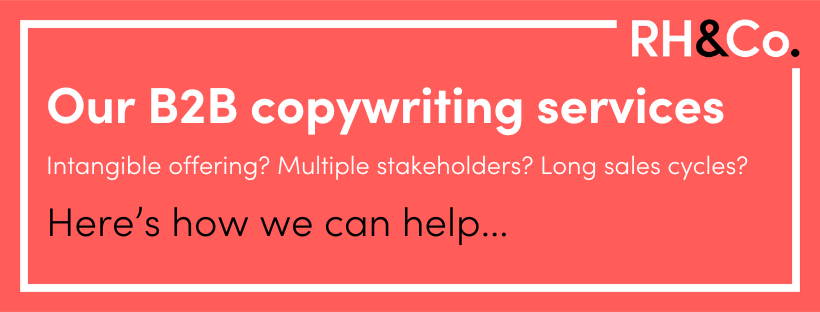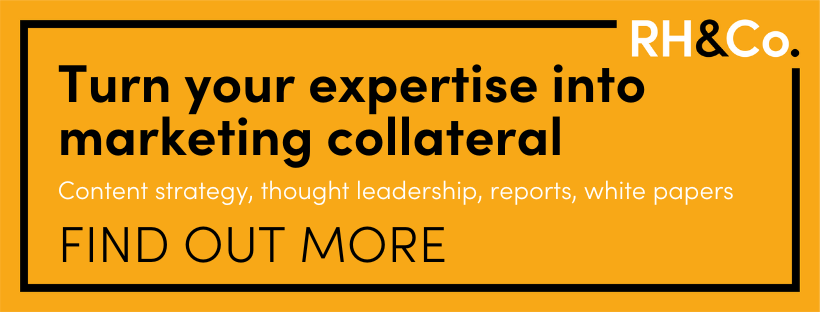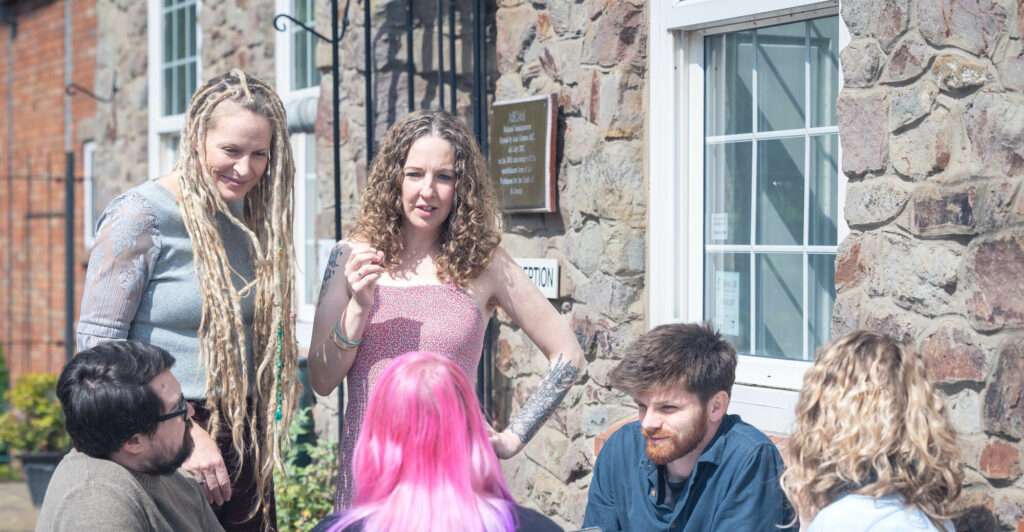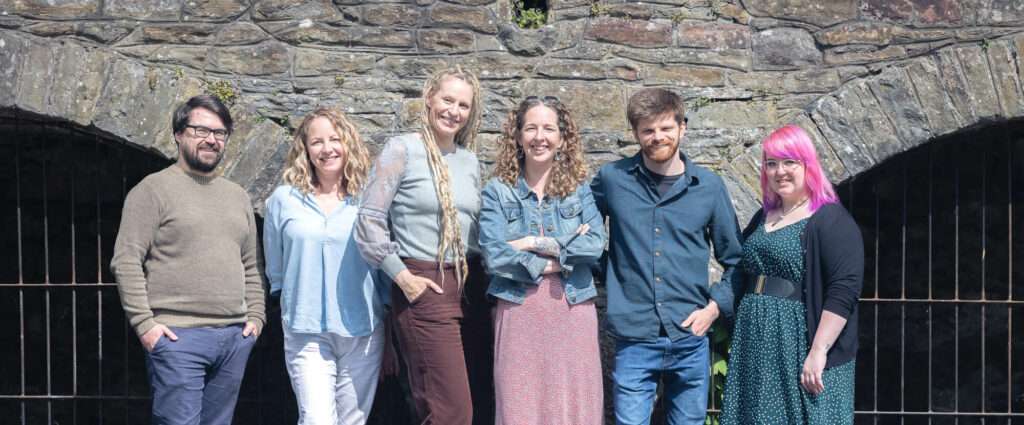

Long sales cycles – how content can help you avoid drop off and close more deals
If you’re in B2B marketing or sales – and what you’re marketing or selling is complex, expensive or business critical – you’ll know all about long sales cycles. The more important a decision is, the longer it takes to make. Add in the complication of multiple stakeholders and you’ve got yourself a challenge when it comes to keeping people’s attention all the way to the finish line.
But while the downside of long sales cycles is that there’s more time for drop off to happen, there is a positive side – it gives you more chances to make the best impression possible on your audience. If you know how to make good use of that window.
In this, the third in our series of articles about B2B marketing challenges, we’re looking at how you can use content to overcome some of the hurdles you’ll experience at various stages of long sales cycles, and build a more profitable relationship for the future.
TL:DR
- Hurdle 01: Building trust early on
- Hurdle 02: Keeping a contact’s attention
- Hurdle 03: Getting buy-in from other stakeholders
- Hurdle 04: Following up a proposal without nagging
- Hurdle 05: Your lead has raised an objection
- Bonus tip: Remember that B2B buyer research starts before they even get in touch
Hurdle 01: Building trust early on
Solution: Genuinely useful, value-based content
Everyone’s wary of a sales person. No matter how friendly we appear, how pure our motives, how carefully worded our outreach, the truth is that we’re trying to sell – and people know it.
Which is why the best sales people don’t start selling straight away. They start off by building trust. These pros don’t try to shortcut long sales cycles. Instead, they allow their prospects to move at their own pace, guiding them all the way rather than forcing them across the line.
Content can play a hugely important role in trust building by demonstrating expertise and value. It’s the classic ‘show, don’t tell’ method.
Trust building content might include a research paper digging into key trends in their industry, a series of blog posts laying out the various solutions to their problem, or a webinar on how to achieve a particular goal. Just be sure that your content is as unbiased as possible – remember, it’s not designed to close the deal, it’s designed to build trust by providing value.
Hurdle 02: Keeping a contact’s attention
Solution: Engaging content that speaks to a specific issue
You’ve just got back from a conference. While you were there, you had several really promising conversations. No one is ready to book a demo or receive a proposal yet but you want to build these fledgling relationships and stay in touch.
Think back to what you were talking about. Did your new contact mention a specific challenge they were facing? Is there a subject they seemed interested in exploring further? Whatever the case, if you have a relevant piece of content you can send them, you’ve got a ready made way to follow up without it feeling like a hard sell.
Thought leadership works well here, as do guides and ‘how to’ content. Again, we’re far from selling at this stage – this is all about adding value and proving that your and your company are genuinely helpful and knowledgeable. Long sales cycles mean playing the long relationship game.

Hurdle 03: Getting buy-in from other stakeholders
Solution: ‘Leave behind’ content that sells on your behalf
It’s so frustrating. You’ve had a few great conversations with your primary contact. You’ve walked them through a demo or given them a great pitch – and they’re bought in. But now they have to get sign-off.
All too often in a B2B setting, we’re marketing or selling to more than one stakeholder. That requires us to adjust and adapt our messaging to different audiences with different priorities. And it often requires us to rely on someone else doing an internal sales pitch on our behalf.
Rather than leaving them to their own devices (are they really going to do it justice?), use ‘leave behind’ content to help them make your case as well as you would. This might be a pitch deck – one designed to be read, rather than viewed as part of a live presentation – a brochure, or any other piece of content that captures your core messaging and value proposition for that audience.
Hurdle 04: Following up a proposal without nagging
Solution: Content that facilitates easy decision-making
You’ve done all you can – now it’s time to wait for the go ahead or the “Sorry, we’ve gone in a different direction” email. Naturally, you’ll have tried to book in a follow up meeting but that isn’t always possible. Sometimes you just have to be patient.
Except, how long do you leave it? At some point, you’ll want to give your prospect a little nudge to see how things are going. But no one’s opening an email with the subject “Just following up…”, right?
To avoid that slightly desperate sense of nagging, think about how you can use follow up content to continue adding value. That might be a breakdown of how your costing works, a customer case study, or a “here’s what to expect if you go ahead” pre-onboarding guide. Anything that speaks to any doubts, queries or concerns they might be having in the decision-making process.
Hurdle 05: Your lead has raised an objection
Solution: Objection busting content that works throughout sales cycles
At some point during a long sales process, someone is going to raise an objection. If you’ve been in the game for a while, you’ll probably be able to list several common objections off the top of your head.
If these objections are raised in a face-to-face meeting, you should be prepared with a suitable answer. But why not preempt objections and use content to get ahead of your audience and provide even more value by helping them move past these blocks without having to voice them?
This type of content is especially important when the objection is coming from someone you don’t have access to yet, as in the case of getting buy-in from internal stakeholders, above. Here, the particular type of leave behind content you want is objective busting content.
As an example, we have an article on our blog titled ‘How can you blog for my business if you’re not an expert in my subject?’ We created it as a direct response to a challenge many in-house marketers face, which is getting their subject matter experts to accept that an outside agency could possibly create complex copy on their behalf.

Bonus tip: Remember that B2B buyer research starts before they even get in touch
While your prospect’s first touchpoint with your organisation might be a proactive cold outreach over email or via social media, or a meeting at an event like a conference or exhibition, it may also be via a referral, a Google search, a media appearance or a post on social media.
According to research from Showpad, B2B customers spend an average of 20 hours researching a company, product or solution before they get in touch with a sales rep – and up to 40 hours if they’re planning on spending more than $100k. Which means you need to make sure there’s great content available to them wherever they look.
We’re talking everything from top of funnel content like white papers and infographics to more bottom of funnel content like technical specs and case studies.
Now you might be thinking, “That’s a job for the marketing department” – and you’re right, to a point. But why leave them in a silo? We’ve found that the clients who get the best results from their content are the ones who see the marketing and sales processes as deeply linked, and have departments that work collaboratively on content strategy.
You can read more about how we helped React Native specialist development agency Morrow use content to increase both the quantity and quality of their leads in this sales content case study. And if you’d like to talk content strategy with an agency that understands sales as well as marketing, get in touch with the RH&Co team today to see how we can support you.
Back to hompeage








